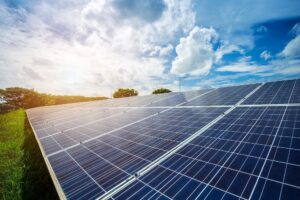It’s incredible to see a large scale solar plant come to life. A lot of panels that make noise and shine. But the most important question is: How do you get the power you need to make your coffee every day from all that sun? Spoiler alert: It’s not as easy as just plugging in a long extension chord.

First, think of electricity as a river. Solar plants don’t only send out a tiny bit of power at a time; they put out a lot of power all at once. There isn’t just one company that supplies national grids. They can have coal, wind, nuclear, and yes, solar power all at the same time. You can’t just “connect and forget” a solar plant. Integration requires meticulous planning.
Let’s start with the solar farm. Panels take up sunlight and change it into direct current (DC). The problem is that the grid needs AC power. People don’t talk about inverters enough. The DC is turned into AC, and the voltage and frequency are just right for the grid. Plant operators watch everything all the time because even a small mistake might cause big issues.
The next step is to use the transformer. Solar plants usually create power at a lower voltage. It won’t get very far before it runs out of gas. Transformers boost it up to 115,000 volts or more, which keeps the electricity going until it arrives to your region.
You’d think that power would just flow from there. Grid integration is all about being on time and stable, though. These are vital if the clouds come in all of a sudden. Computers, sensors, and communication networks maintain track of supply and demand every second in national grids. The grid keeps everything in equilibrium, like a traffic cop directing cars through busy intersections.
Don’t forget about storage and other things. Some new big solar farms use batteries that are made for utilities. These assist ease the pain of shocks, making the bumps in the middle of the day and the afternoon easier to deal with. When there is too much sun, batteries gulp up juice for a rainy day or the next time everyone switches on their air conditioning at the same time.
Large-scale solar becomes more than just a drop in the bucket when you know how to use it, keep an eye on it, and work together. Instead, it’s a vital player that always gives millions of people clean energy, even though they never see the sun shine on those panels. The story is about how panels, people, and places are all linked.